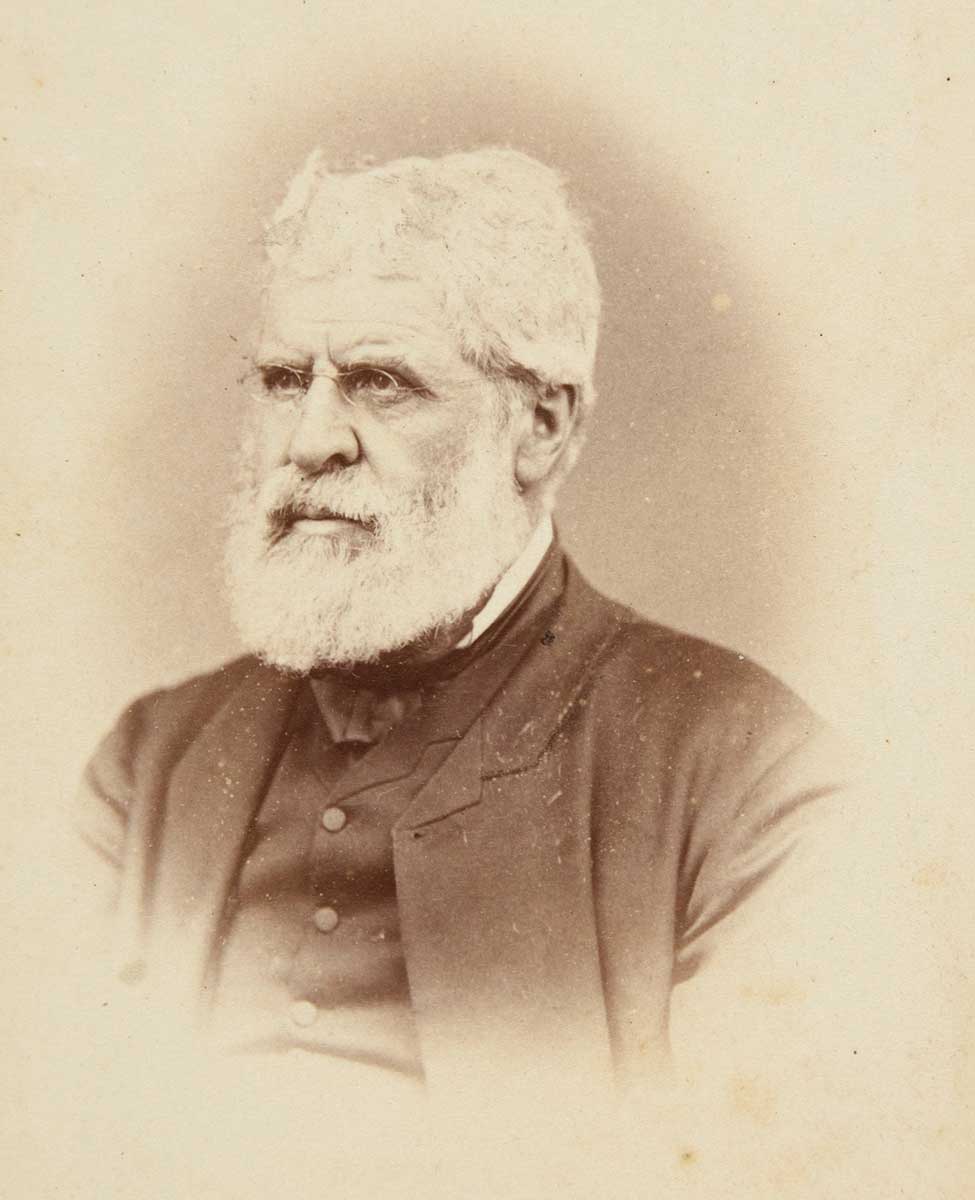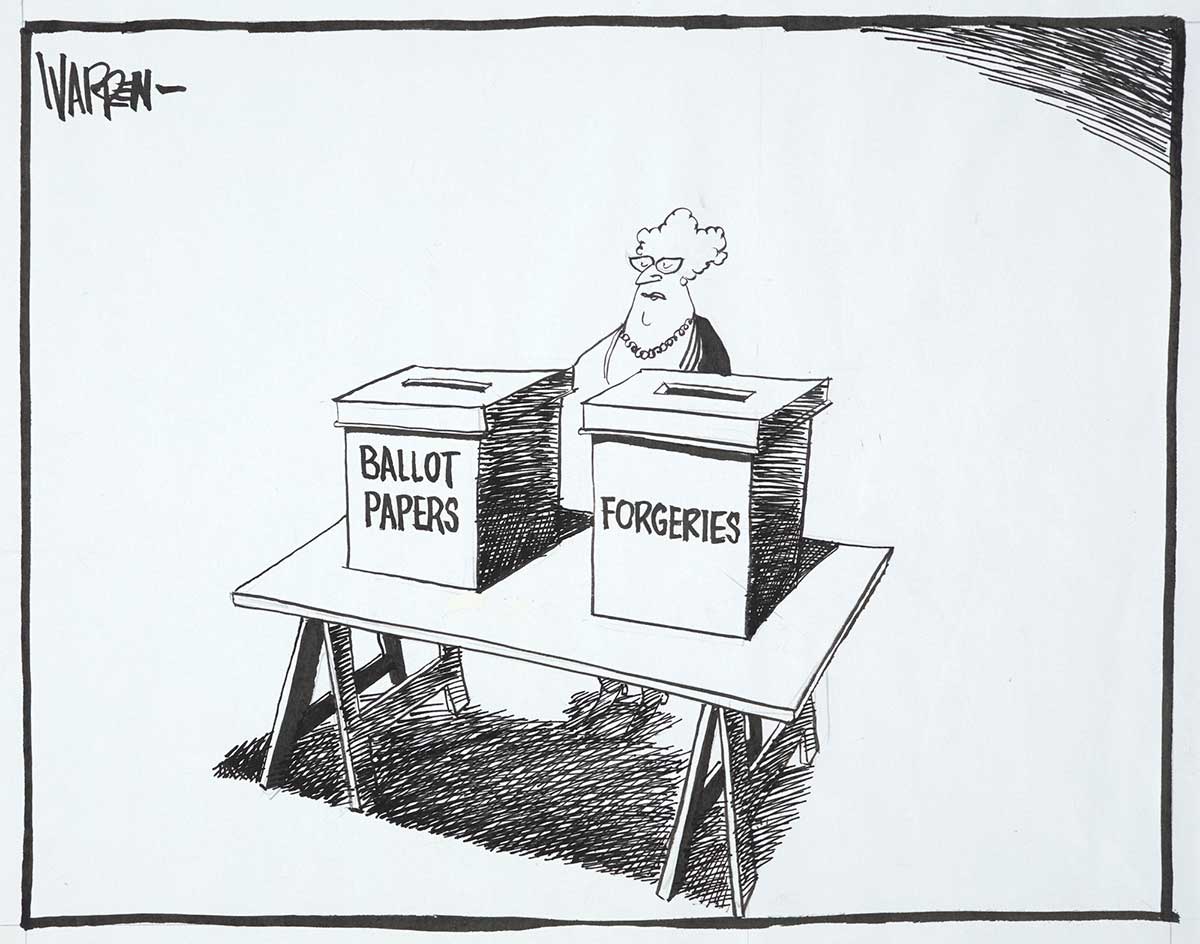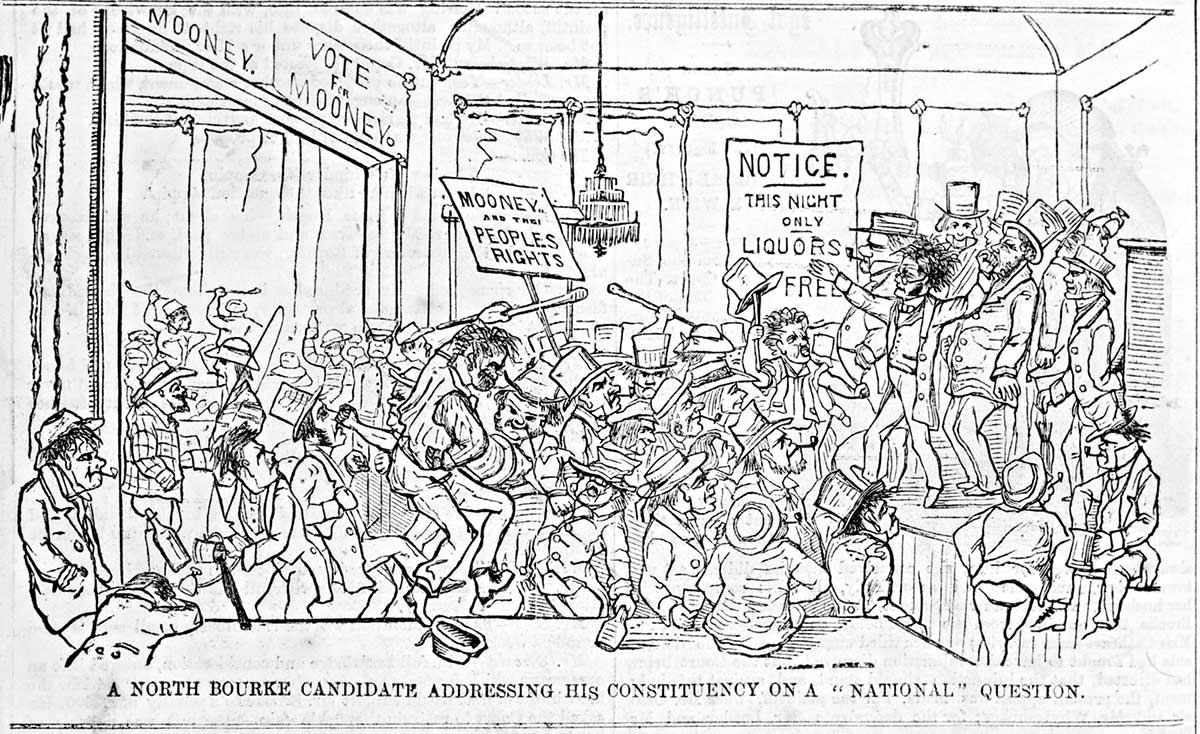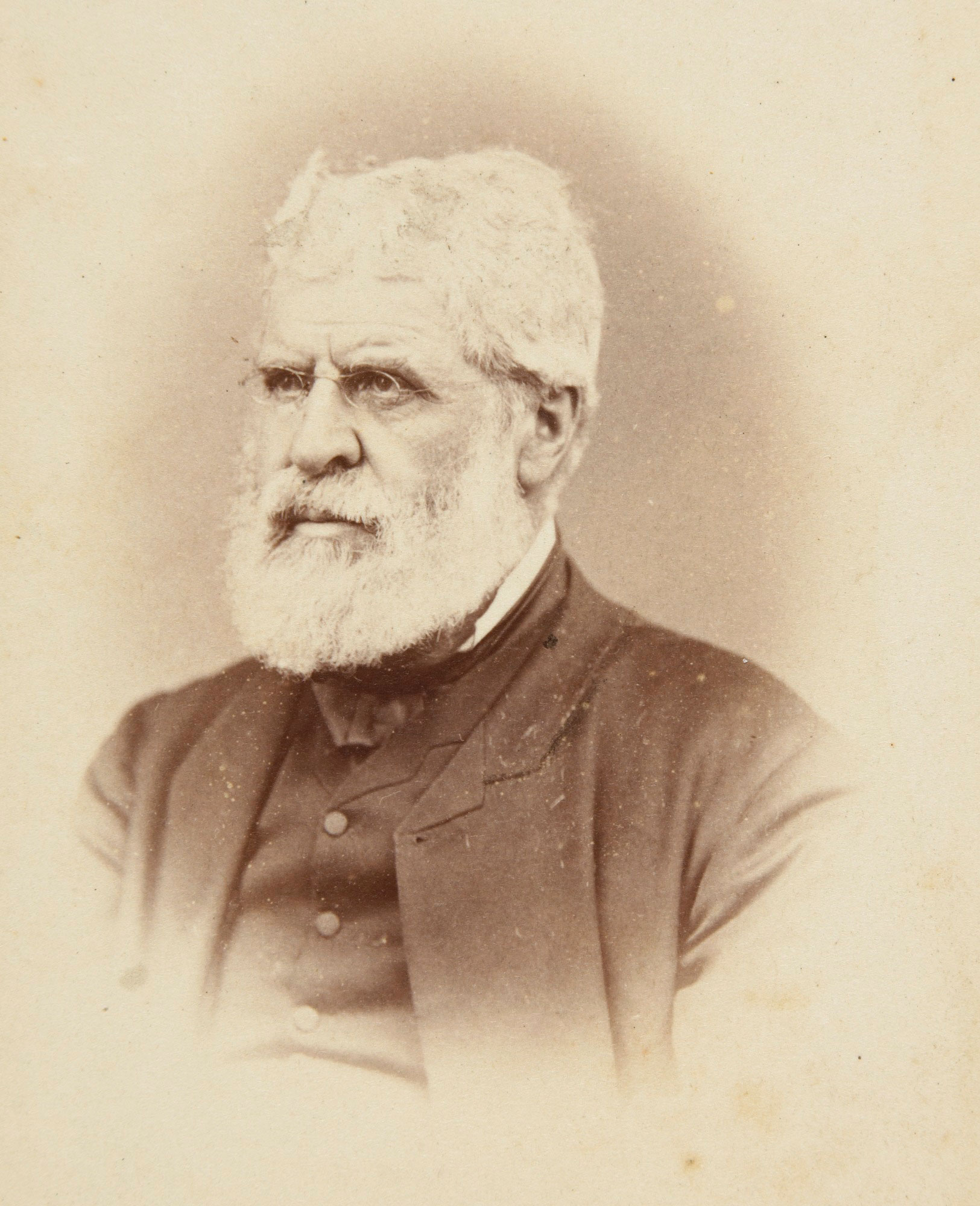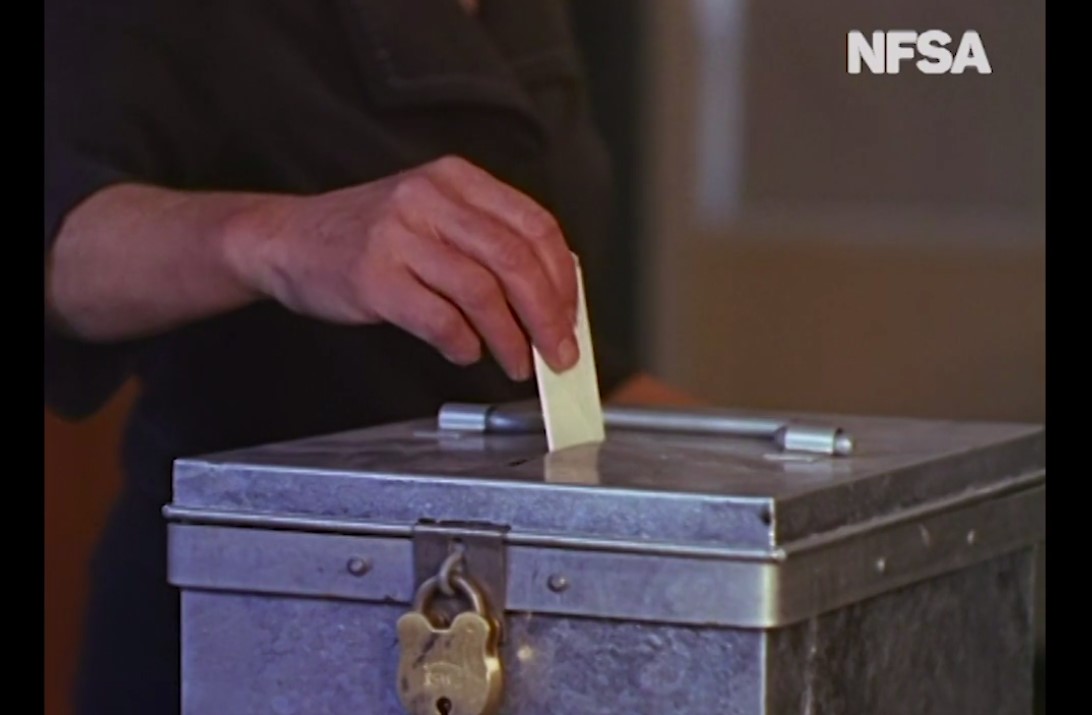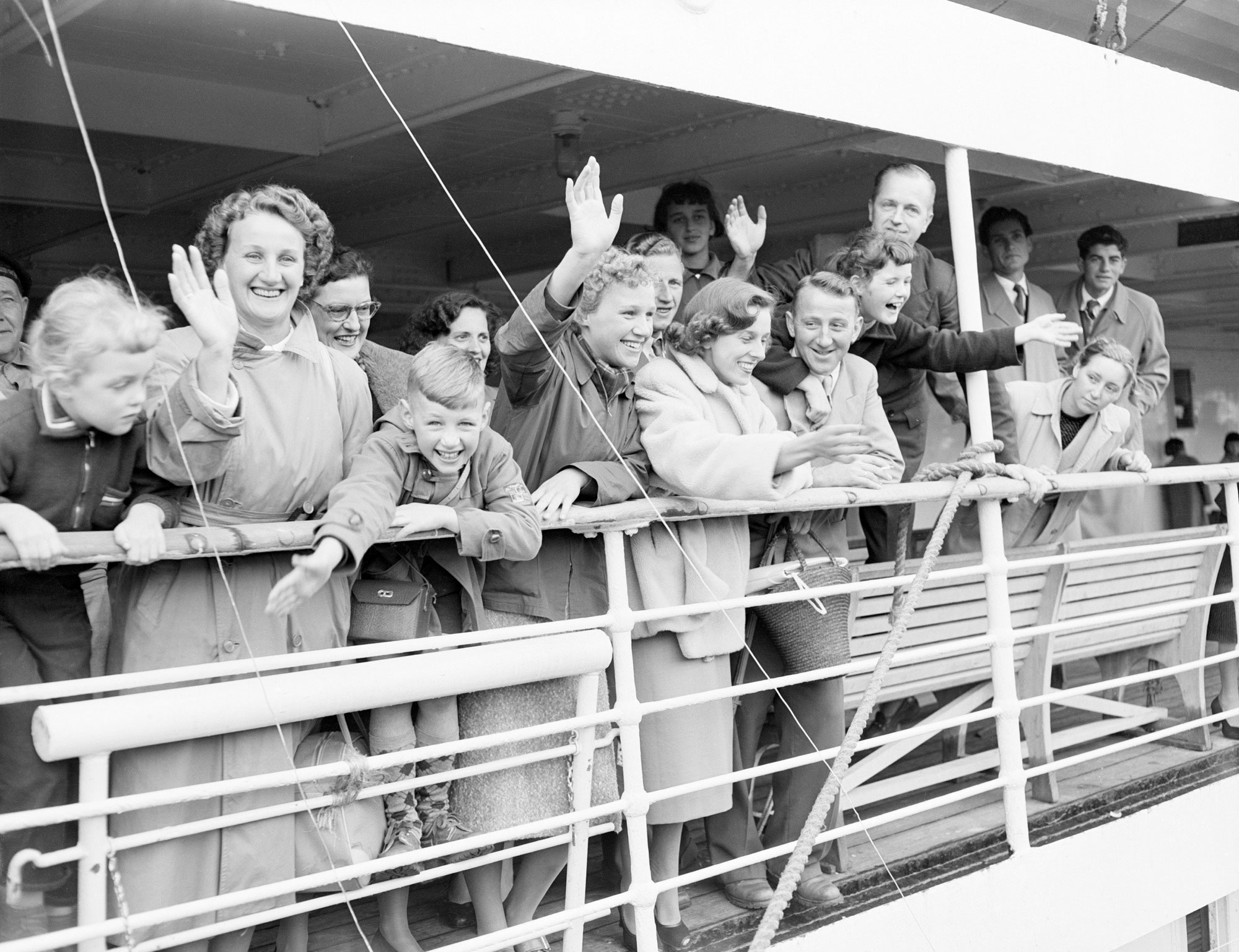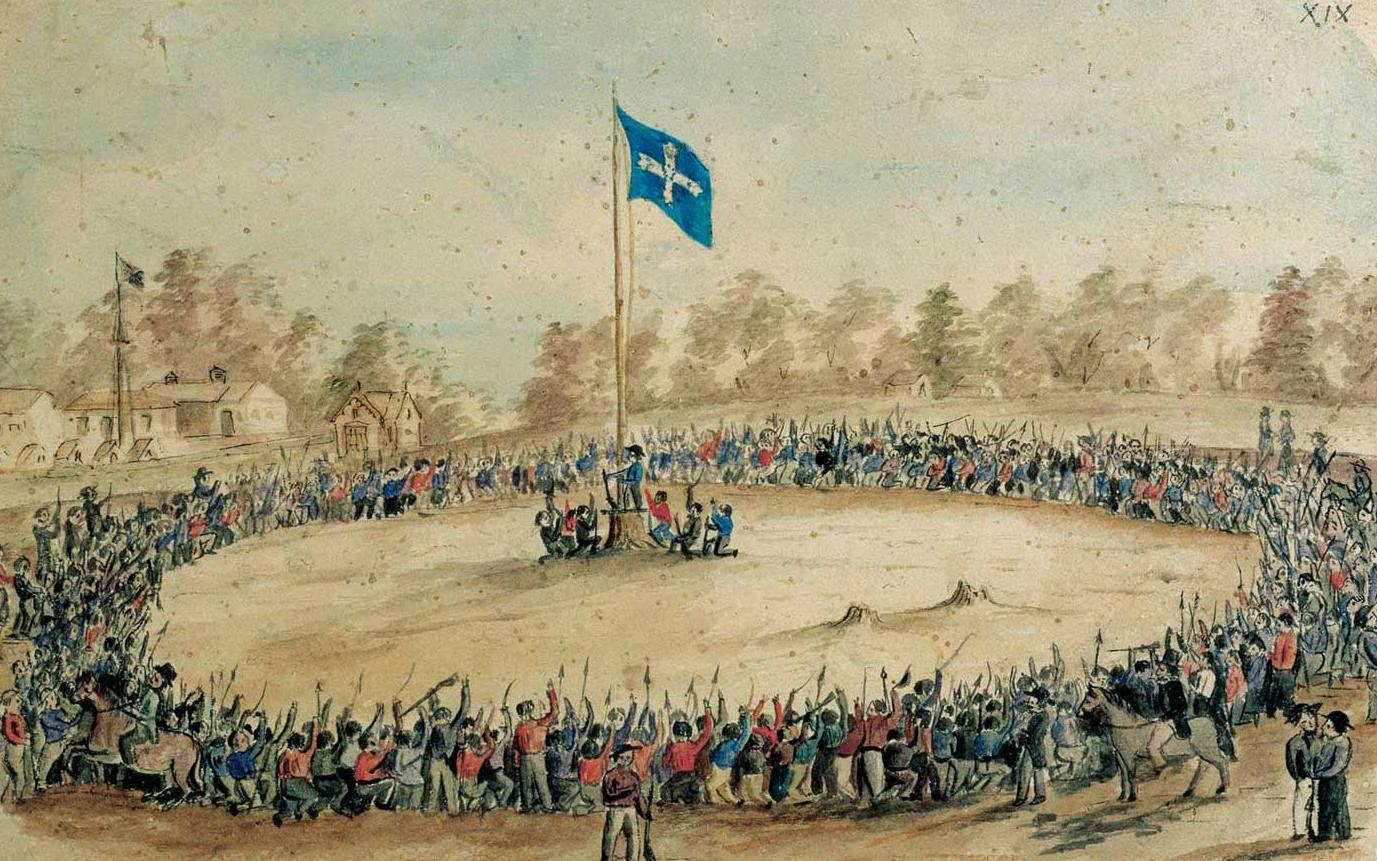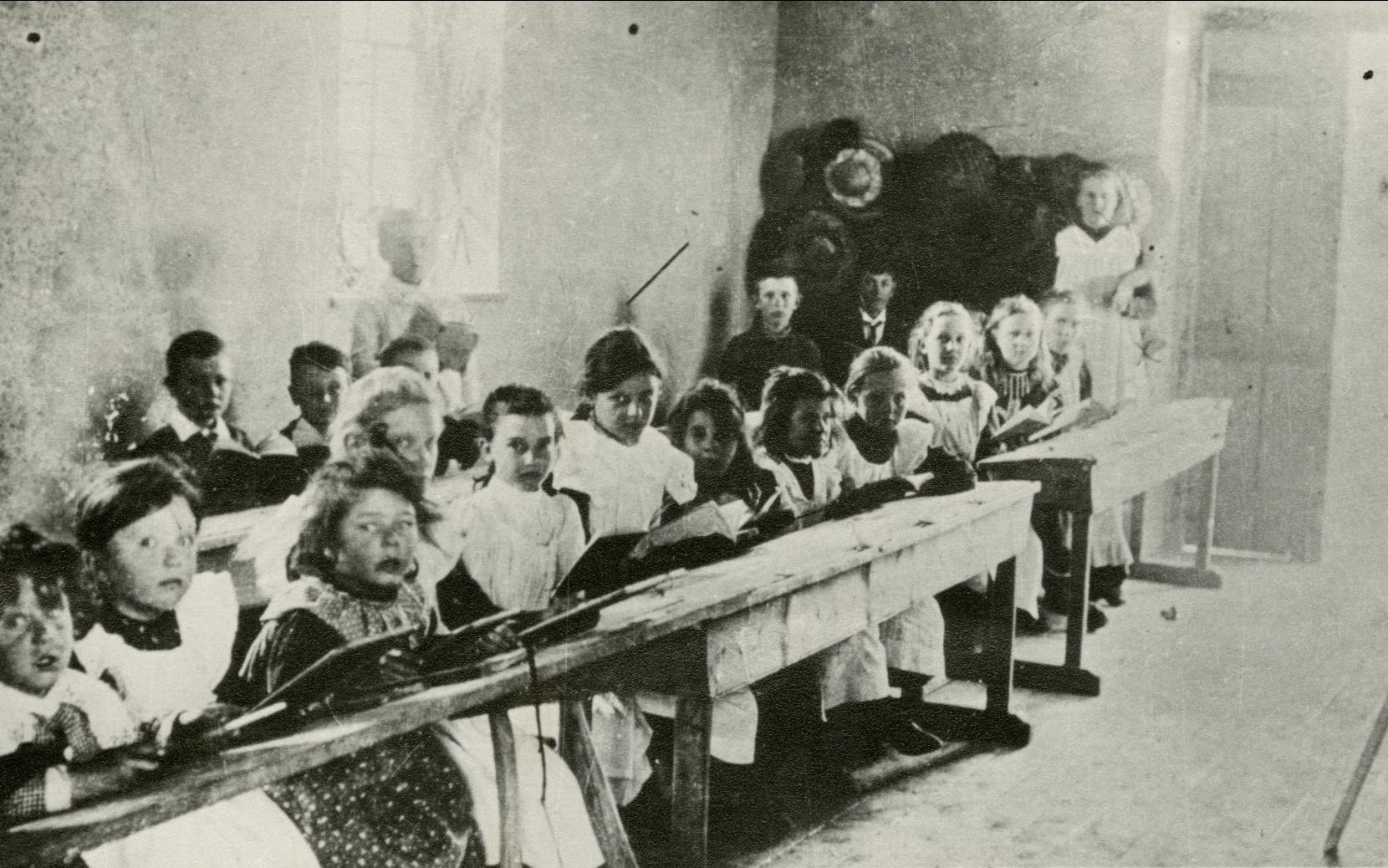The ‘Australian ballot’
1856: Secret ballot introduced and adult men given the vote
The ‘Australian ballot’
1856: Secret ballot introduced and adult men given the vote
In a snapshot
In 1856 South Australia became the first state in Australia where all men were given the vote (universal male suffrage), making it one of the most democratic places in the world at that time. In the same year the secret ballot — the casting of votes in secret — was introduced in Victoria, Tasmania and South Australia. Other Australian states quickly followed. Soon after South Australia introduced what became known as the ‘Australian ballot’, which influenced electoral reform in Britain and the United States in the 1870s and 1880s.
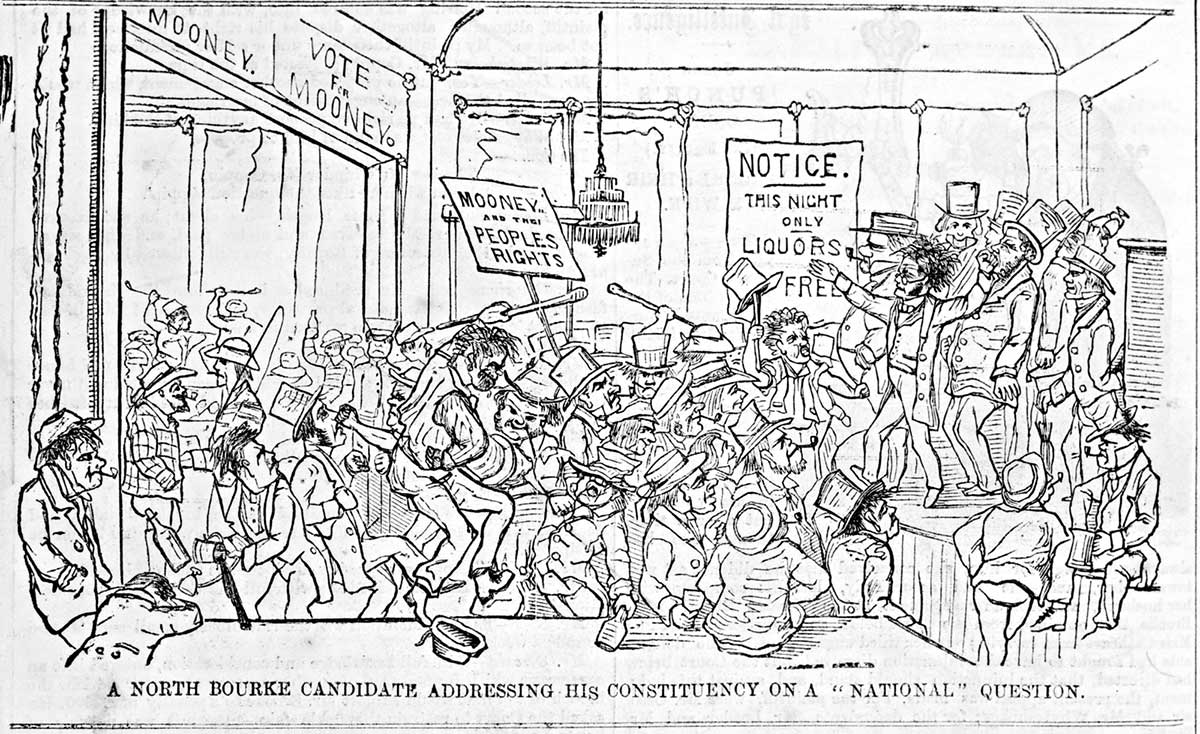
 Can you find out?
Can you find out?
1. How did voting work in the Australian colonies before the secret ballot?
2. What was the purpose of the secret ballot? How did it first work in Victoria and New South Wales?
3. What important change to the secret ballot did South Australia make?
![Black and white illustration of a portrait of a distinguished looking man in 19th Century clothing. Printed at the bottom is 'THE HON. W. C. HAINES—[FROM A PHOTOGRAPH BY FRITH.]'](/sites/default/files/2023-08/1800s_1856_SecretBallot_3-1200h.jpg)
How did elections work before the secret ballot?
For the first 50 to 60 years of British colonisation in Australia, British governors ruled the Australian colonies. Each governor chose people to be part of a legislative council, which then gave political advice to the governor.
When Britain stopped sending convicts to New South Wales in 1840 many people in Australia began to argue that the colony was now ready for self-rule and a new political system. In 1842 the British Parliament passed an Act which meant that, for the first time, some members of the New South Wales Legislative Council had to be elected.
But the only people allowed to vote were wealthy men who owned or rented expensive properties. Also voters had to cast their vote in full public view. This meant that elections could be very violent as people attacked one another because of who they chose to vote for. For example two men were shot while voting in elections in Sydney and Melbourne in 1843.
In 1850 the British Parliament passed the Australian Colonies Government Act, which was the first step toward the Australian colonies ruling themselves. This created a lot of debate about how the colonial governments would work and how their parliaments would be elected.
Many people wanted to make sure that all men could vote and stand for election even if they were not wealthy. They also wanted to introduce the secret ballot and salaries for members of parliament.
What is universal male suffrage?
South Australia, which didn’t have many convicts, saw itself as a model democratic society. As soon as the Australian Colonies Government Act was passed South Australians began debating what kind of new colonial government they wanted.
Debate was heated but eventually universal male suffrage (the right to vote, for men 21 years and older) became law in South Australia’s Electoral Act 1856. This meant that men no longer had to own or rent property in order to vote. Universal male suffrage was soon introduced in Victoria (1857) and New South Wales (1859).
‘A man came here to benefit himself and his family and the fact that a large family prevented a man from acquiring property is no reason why he should be disenfranchised.’
What was the secret ballot and how did it work?
In December 1855 a Bill was brought to the Victorian Legislative Council calling for a secret ballot to be made law. This would allow men to cast their vote in secret so they couldn’t be influenced or intimidated by other people. It was hoped this would reduce violence during elections.
There was fierce opposition to the Bill, especially from wealthy members of the Legislative Council. The Attorney-General of Victoria, WF Stawell, even argued that the secret ballot was ‘un-English and unconstitutional’.
Most supporters of the secret ballot still weren’t sure how it would work in practice until Henry Samuel Chapman, a member of the Victorian Legislative Council, came up with a plan. He suggested that the government send ballot papers with all the nominees’ names to the voters. Voters would then delete the names of the candidates they didn’t want to vote for.
In 1856 the Bill was passed by the Victorian Legislative Council. The election of the first Victorian parliament, using Chapman’s secret ballot system, was held between August and October 1856.
What was the ‘Australian ballot’?
South Australia introduced the secret ballot only a month after Victoria, and New South Wales followed in 1858.
South Australia made a small but important change. Instead of deleting the names of the candidates they didn’t want, voters marked an ‘X’ beside the name of the candidates they wanted to vote for.
This system, which became known as the ‘Australian ballot’, was so impressive that it was adopted by Britain in 1872 and the United States after 1884.
Read a longer version of this Defining Moment on the National Museum of Australia’s website.
Research task
The introduction of the secret ballot and universal male suffrage were important Australian electoral reforms but some groups were still left out of the voting process. Do some research to find out who was left out and why.
 What did you learn?
What did you learn?
1. How did voting work in the Australian colonies before the secret ballot?
2. What was the purpose of the secret ballot? How did it first work in Victoria and New South Wales?
3. What important change to the secret ballot did South Australia make?






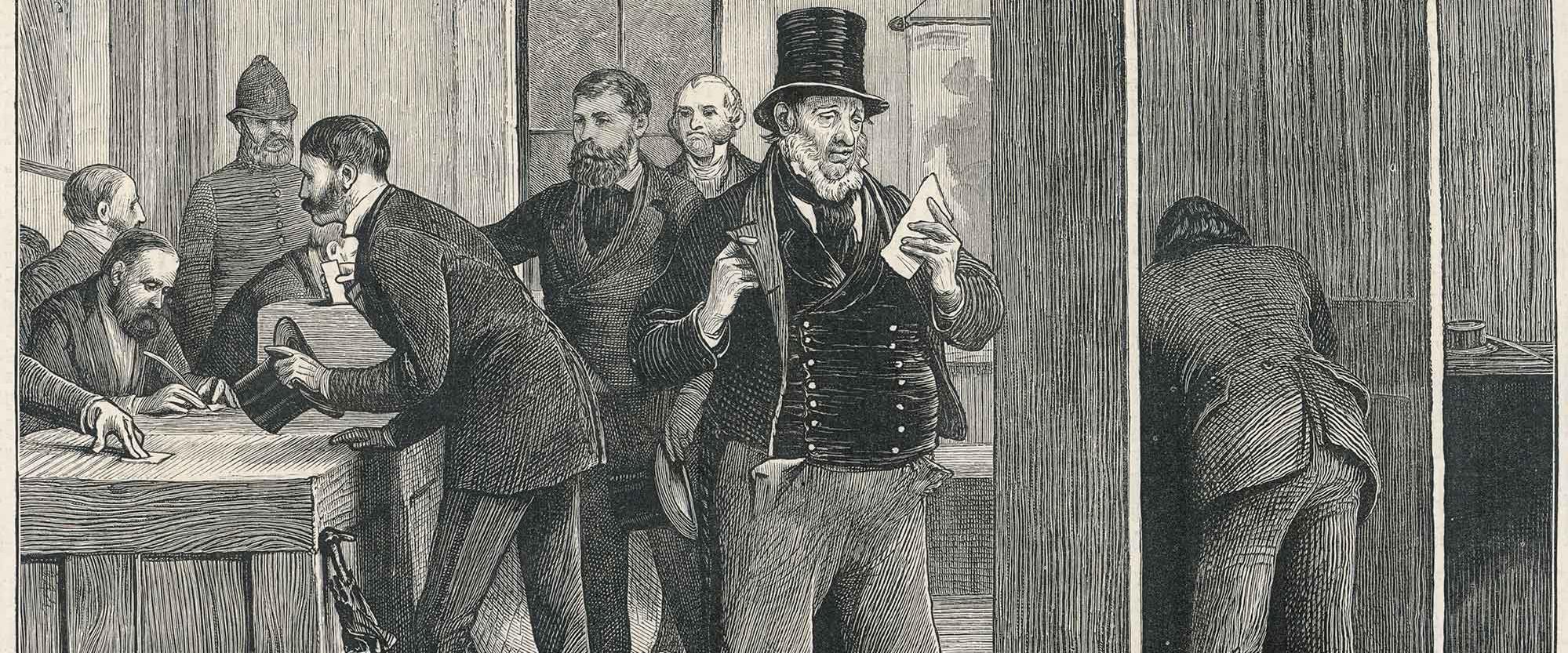
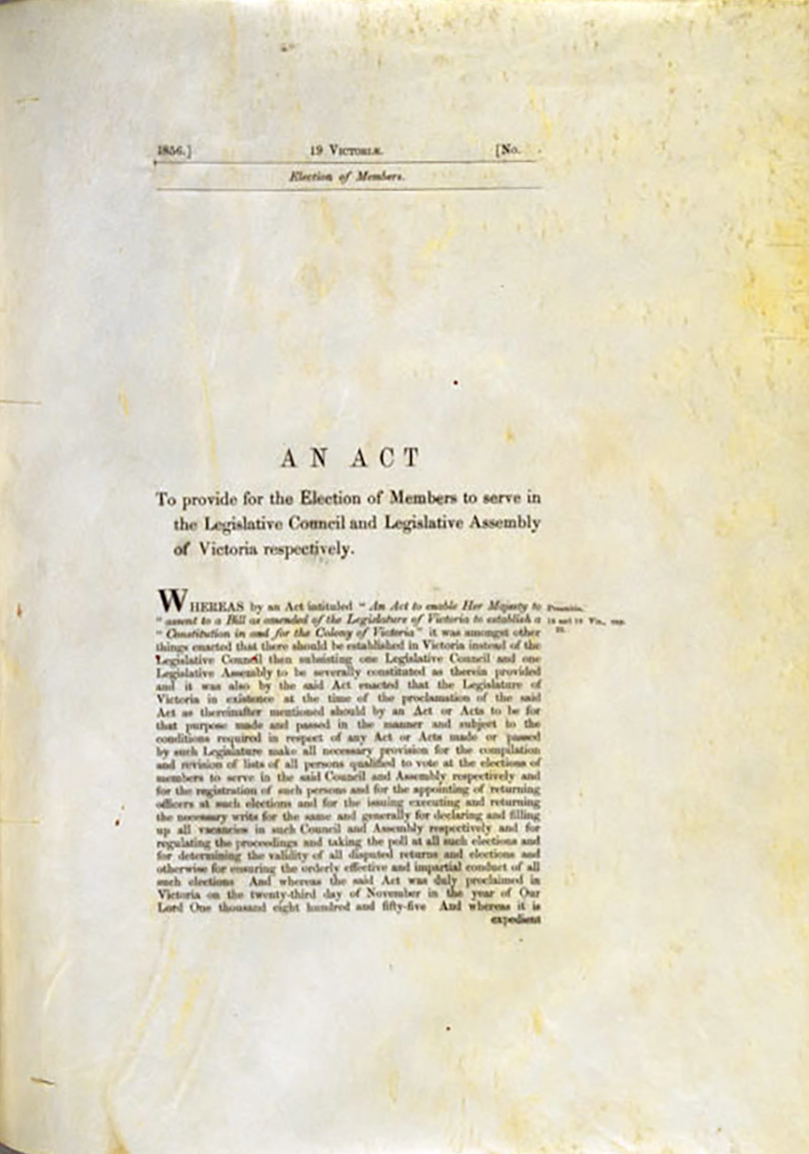
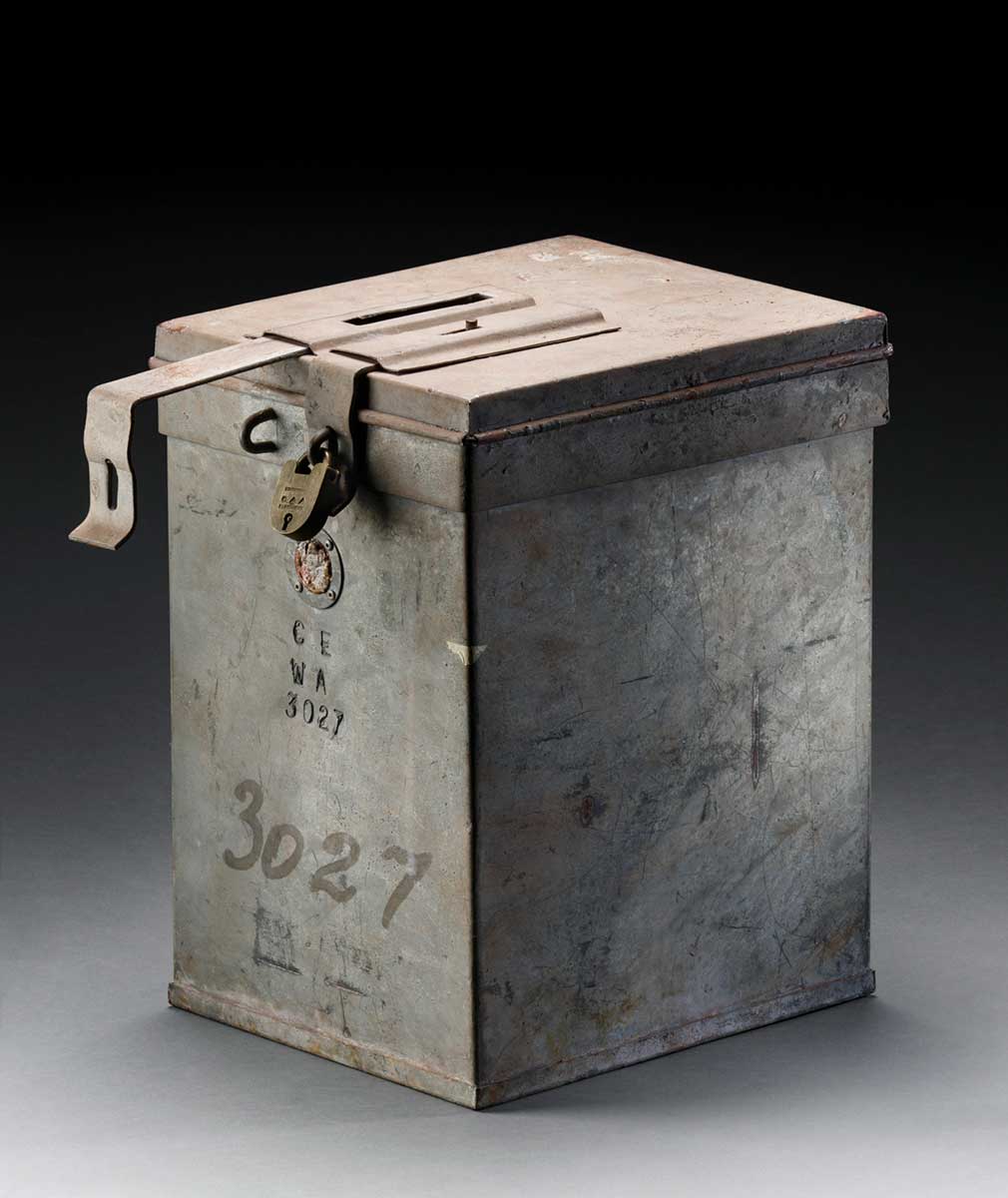
![Black and white illustration of a portrait of a distinguished looking man in 19th Century clothing. Printed at the bottom is 'THE HON. W. C. HAINES—[FROM A PHOTOGRAPH BY FRITH.]'](/sites/default/files/2023-08/1800s_1856_SecretBallot_3-1200h.jpg?v=1)
